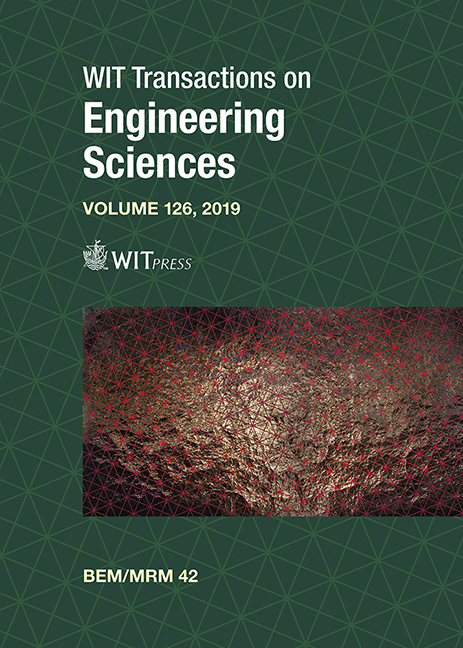NUMERICAL SCHEMES FOR VORTEX SHEET INTENSITY COMPUTATION IN VORTEX METHODS TAKING INTO ACCOUNT THE CURVILINEARITY OF THE AIRFOIL SURFACE LINE
Price
Free (open access)
Transaction
Volume
126
Pages
11
Page Range
269 - 279
Published
2019
Size
394 kb
Paper DOI
10.2495/BE420241
Copyright
WIT Press
Author(s)
KSENIIA KUZMINA, ILIA MARCHEVSKY
Abstract
In vortex methods, vorticity is the primary computed variable. The problem of the accuracy improvement of vorticity generation simulation at the airfoil surface line in 2D vortex methods is considered. The generated vorticity is simulated by a thin vortex sheet at the airfoil surface line, and it is necessary to determine the intensity of this sheet at each time step. It can be found from the no-slip boundary condition, which leads to a vector boundary integral equation. There are two approaches to satisfy this equation: the first one leads to a singular integral equation of the 1st kind, while the second one leads to a Fredholm-type integral equation of the 2nd kind with bounded kernel for smooth airfoils. Usually, for numerical solution of the boundary integral equation, the airfoil surface line is replaced by a polygon, which consists of straight segments (panels). A discrete analogue of the integral equation can be obtained using the Galerkin method. Different families of basis and projection functions lead to numerical schemes with different complexity and accuracy. For example, a numerical scheme with piecewise-constant basis functions provides the first order of accuracy for vortex sheet intensity, and a numerical scheme with piecewise-linear functions gives the second order of accuracy. However, the velocity field near the airfoil surface line is also of interest. In the case of rectilinear airfoil surface line discretization, the accuracy of velocity field reconstruction has no more than the first order of accuracy for both, piecewise-constant and piecewise-linear numerical schemes. In order to obtain a higher order of accuracy for velocity field reconstruction, it is necessary to take into account the curvilinearity of the airfoil surface line. In this research, we have developed such an approach, which provides the second order of accuracy both, for vortex sheet intensity computation and velocity field reconstruction.
Keywords
vortex method, boundary integral equation, vortex sheet, curvilinear panel





